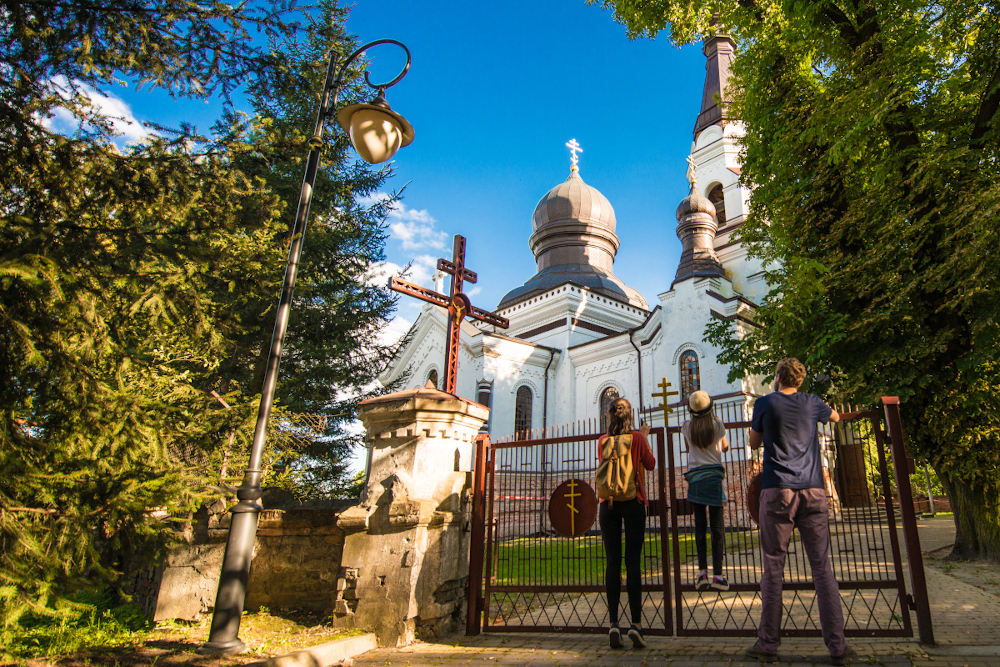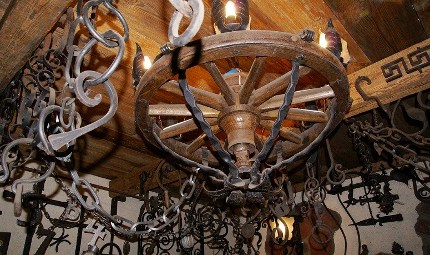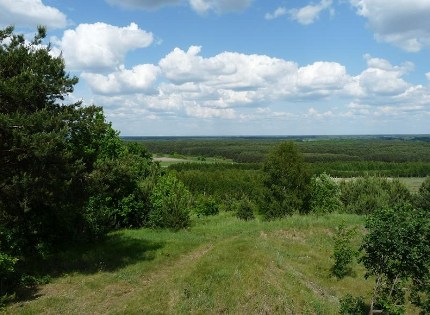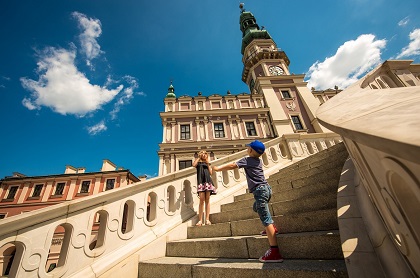s-z

A village on the Nałęczów Plateau with over 700 years of history, formerly a royal town with a castle built by King Casimir the Great. The place is famous for the cult of Our Lady of Kębło, whose miraculous statue from 1440 is held in the Gothic chapel next to the Neo-Gothic St. Adalbert’s Church. The church was built in the years 1907-14 and features another Gothic sculpture of Our Lady created in the 14th-15th c. Nearby there is a pilgrim’s house and a parish museum. A copy of the statue of Our Lady of Kębło can be seen in a chapel in Kębło commemorating Marian apparitions ...

A village at the fork of the Vistula River and the Chodelka River with fertile lands and well-developed hop-growing and fruit-farming. The most interesting historic sights are the Church of St. Florian and St. Ursula, the Powiślak Inn from the mid-19th c., the palace of the Kleniewski Family and the old agricultural farm in Szczeraków (from the 19th and 20th c.) ...

A town by the Bug River. It has the unique atmosphere of a historic small town with visible signs of cultural coexistence of Catholicism, Orthodox Christianity and Judaism. The most interesting landmarks include: 18th-century Baroque synagogues, Baroque church and monastery of the Pauline Order (18th c.), 19th-century Russo-Byzantine Orthodox temple and a Baroque commercial building with shops and butcher’s stalls called the Tetragon. Włodawa hosts the annual Festival of Three Cultures promoting the multicultural heritage of the town. In the southern suburb of the town, on a high riverbank ...

A large agri-tourist village maintaining smithery traditions. Every year the village hosts workshops and festivals of traditional blacksmithing craft. ...

A village situated in the Grabowieckie Divide. The preserved small town architecture reminds of the time when Wojsławice was a town of three religions. Places of interest include a late-Renaissance Roman Catholic church from the XVI century, an XVIII century Orthodox church (formerly a Uniate temple) and a 1780 Jewish synagogue (presently serving as a library and a Chamber of Traditions of the Wojsławice Land). By each of five roads leading to the village there is a brick chapel with a sculpture of a saint built in the mid XVIII century. ...

A village with a Baroque church from the turn of the 18th c. – the sanctuary of Our Lady, the Patron Saint of Polish Soldiers of the September Campaign. At the parish cemetery there is a grave of soldiers from General Kleeberg’s ‘Polesie’ Independent Operational Group who died during the Battle of Kock (3-5 October 1939), fought near Wola Gułowska. Memorabilia and information connected with the battle can be seen at the local Museum of Combat Action of Kleeberg’s Soldiers. ...

A birthplace of Henryk Sienkiewicz (5th May 1846), a writer and Nobel Prize winner. The Sienkiewicz museum features family memorabilia, authentic objects and modern sculptures of characters from his novels. The building is located inside a manor annex within a 19th-century landscape park. ...

Village in the valley of the Bug River and a popular agri-tourist resort since the beginning of the 20th c. It offers ideal conditions for rest and relaxation – beautiful scenery of forests and riverside fields, healthy microclimate, and a beach with a swimming area by an oxbow lake created by the meandering Bug River. ...

A village with a private archaeological museum featuring a reconstructed early Slavic settlement, modelled on the 10th-century settlement discovered in the neighbouring village of Klarów. Cultural events and workshops presenting the life of early Slavic tribes are often held here. ...

The city was founded in the XVI century by Crown Hetman Jan Zamoyski. Designed by an eminent Italian architect Bernardo Morando, the city-fortress was inscribed on the UNESCO World Heritage List in 1992 as an architectural and urban complex. ...
Page 3 of 4




.jpg)







